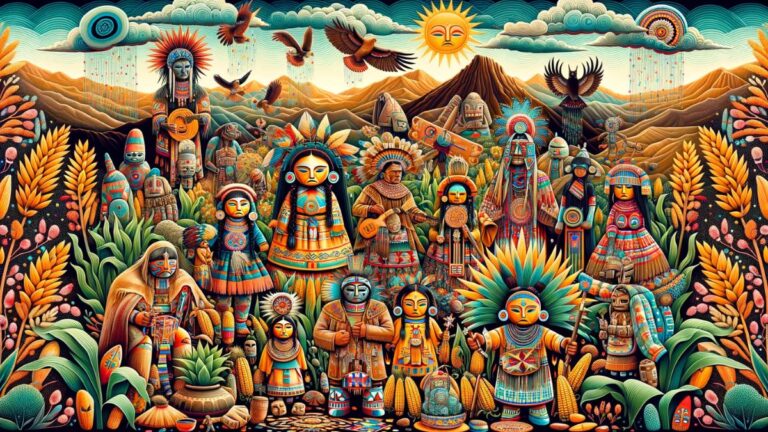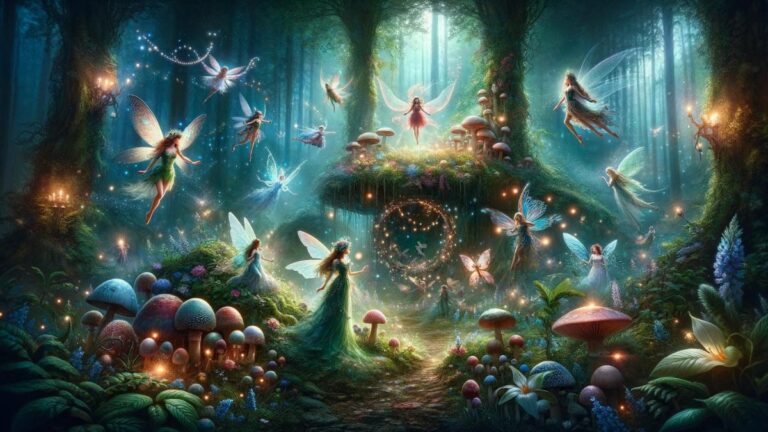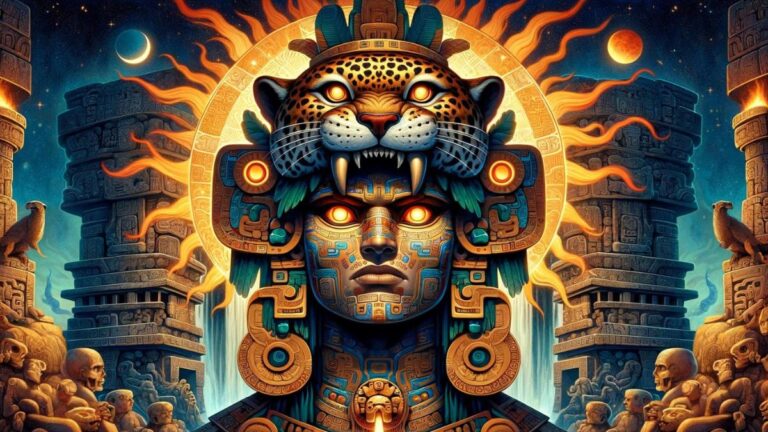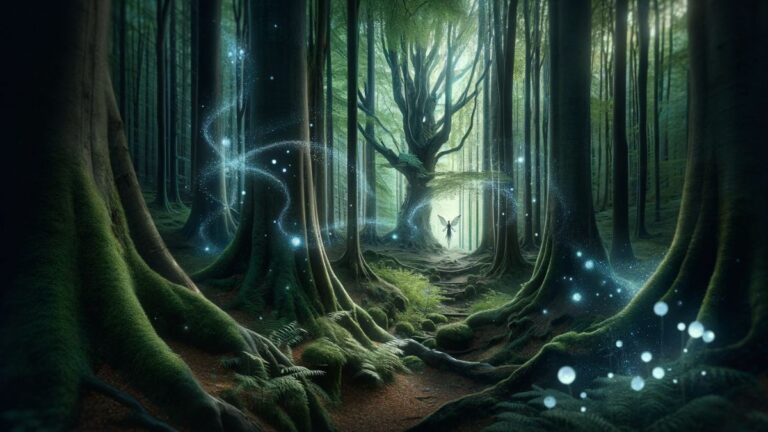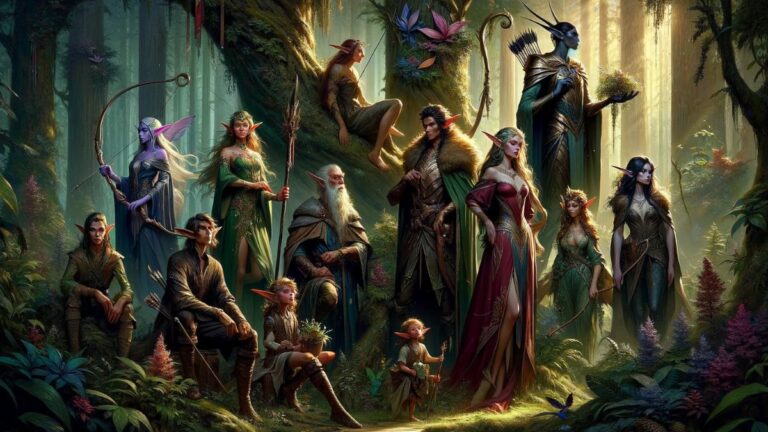50 Fascinating Facts About Mermaids: Unveiling the Secrets of the Sea
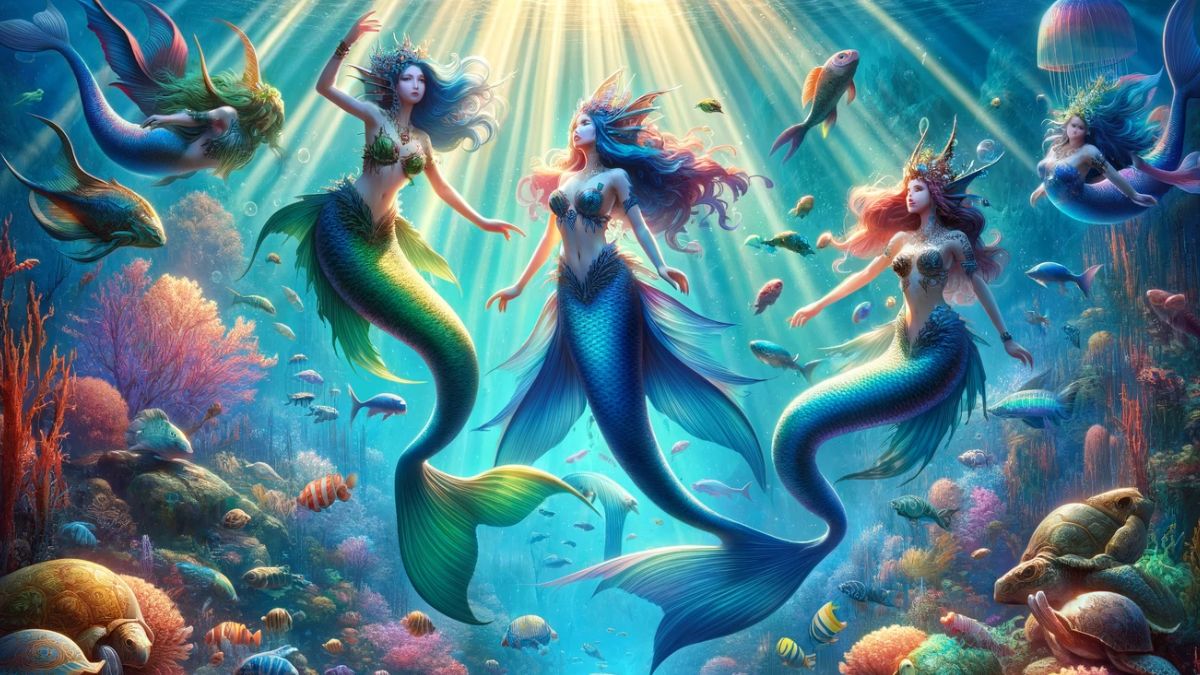
Mermaids have always captivated the human imagination, shimmering at the crossroads of myth and mystery. These enigmatic creatures of the sea have been a subject of fascination in various cultures worldwide, often symbolizing the untamed, mysterious nature of the ocean. In this article, we dive deep into the realm of mermaids, exploring intriguing facts that reveal more about their legendary existence. From their mythical origins to their portrayal in modern media, we uncover the secrets hidden beneath the waves, inviting you to join us in this mesmerizing underwater journey.
1. Origins of the Mermaid Myth
The idea of mermaids has been around for centuries, with roots in ancient folklore. Stories of half-human, half-fish beings have been told by sailors and fishermen for generations, often blending reality with fantasy. These tales were likely inspired by sightings of marine animals like manatees or seals, which can appear human-like from a distance. Mermaid myths vary widely across different cultures, each adding unique elements to these captivating sea creatures.
2. Habitat: Where Do Mermaids Live?
Mermaids are believed to inhabit the vast and mysterious depths of the ocean. According to legend, they reside in underwater kingdoms, often described as being as grand and splendid as any on land. These underwater realms are said to be made of coral and pearls, hidden away from the human eye, creating an elusive world that has captured the imagination of many.
3. Lifespan: The Age of a Mermaid
Legends suggest that mermaids can live for hundreds of years, far exceeding the lifespan of humans. Their longevity is often attributed to their magical nature and the healing properties of the water they live in. This aspect of mermaid lore highlights the timeless allure of these creatures, as they remain eternally young and beautiful through the ages.
4. Diet: What Do Mermaids Eat?
The diet of a mermaid is believed to be primarily pescatarian, consisting of fish, seaweed, and other marine delicacies. Some stories also mention that they occasionally indulge in human food, particularly sweets and cakes, which they receive from sailors or find on sunken ships. This diet reflects their connection to the ocean and its bounty.
5. The Reality Behind Mermaids
The question of whether mermaids are real has intrigued humans for centuries. While there is no scientific evidence to support their existence, mermaids continue to be a popular subject in folklore, literature, and film. Their enduring presence in culture speaks to the human fascination with the unknown and the allure of what lies beneath the ocean’s surface.
6. Mermaids Outside Water
Legends often depict mermaids with the ability to survive both in and out of water. In many stories, mermaids are said to transform their tails into legs when on land, allowing them to walk among humans. This duality symbolizes the connection between the terrestrial and marine worlds, blurring the lines between reality and myth.
7. Language of the Mermaids
Mermaids are often depicted as having their own language, a melodious and enchanting form of communication that reflects the sounds of the sea. In some tales, they are also capable of speaking human languages, enabling them to interact with sailors and other humans they encounter.
8. The Tears of a Mermaid
In folklore, the tears of a mermaid are often imbued with special properties. Some stories suggest that their tears can turn into pearls, while others believe that they have healing or magical powers. This element adds a layer of mystique and depth to the character of mermaids, highlighting their connection to the emotional and mystical aspects of the sea.
9. Physical Characteristics: The Height of Mermaids
Mermaids are typically depicted as being of human size, with their height ranging from five to seven feet. However, their overall appearance can vary significantly across different cultures and stories. Some are described as breathtakingly beautiful, while others may have a more eerie or mystical look, reflecting the diverse ways in which these creatures are imagined.
10. The Anatomy of Mermaids: Number of Hearts
There is no consistent depiction of mermaid anatomy in folklore, but some stories suggest that they have multiple hearts. This idea likely stems from their mystical nature, emphasizing their otherworldly and magical qualities. The notion of multiple hearts could also symbolize the depth of their emotions and their strong connection to the sea.
11. Mermaids and Healing Powers
Mermaids are often attributed with magical healing abilities in folklore. It’s said that they can heal not only themselves but also others, using mysterious powers that stem from their deep connection with the sea. This ability makes them both revered and feared, as their healing can be as unpredictable as the ocean itself.
12. Mermaid Songs and Their Power
The song of a mermaid is a recurring theme in myths and stories. These songs are believed to be incredibly enchanting, sometimes even having hypnotic or magical effects on listeners. Sailors often spoke of being drawn to the alluring melodies of mermaids, leading to tales of ships being lured off course.
13. Mermaids in Different Cultures
Mermaids appear in the folklore of many cultures around the world, each with its own unique interpretation. For example, the Nordic tales speak of the siren-like ‘sirens’, while in Africa, ‘Mami Wata’ is a powerful water spirit. These variations show how the mermaid myth has been adapted to fit the beliefs and environments of different communities.
14. The Symbolism of Mermaids
In various cultures, mermaids symbolize different aspects of life and nature. They are often seen as representations of freedom, mystery, and the power of femininity. Mermaids also symbolize the unknown and the dangers of the sea, reflecting the respect and fear that humans have historically held towards the ocean.
15. Mermaids and Environmental Awareness
In recent times, mermaids have been used as symbols for environmental campaigns, especially those focusing on ocean conservation. Their mythical connection to the sea makes them perfect mascots for promoting awareness about marine pollution and the importance of preserving marine ecosystems.
16. Mermaids in Art and Literature
Throughout history, mermaids have been a popular subject in art and literature. From ancient sculptures and Renaissance paintings to modern films and novels, these mythical creatures have been depicted in countless ways, each interpretation adding to the rich tapestry of mermaid mythology.
17. The Transformation of Mermaids
In some stories, mermaids have the ability to transform completely into humans. This transformation is often linked to their desire to experience human life or love, and it usually comes with a cost or a set of conditions, reflecting the challenges of straddling two worlds.
18. Mermaids and Moonlight
Many cultures associate mermaids with the moon and tides, believing that these creatures have a special connection with lunar phases. This link is often seen as a symbol of the mermaids’ deep integration with the natural rhythms of the sea and the greater universe.
19. The Mermaid’s Tail: A Symbol of Freedom
The tail of a mermaid is not just a physical feature; it’s a symbol of their freedom and power in the water. It’s often depicted as being strong enough to create whirlpools and swift currents, emphasizing the mermaid’s mastery over their aquatic domain.
20. Mermaids and Human Interaction
Stories about human encounters with mermaids range from friendly and helpful to ominous and deceptive. These interactions reflect the dual nature of the sea – sometimes a source of life and sustenance, and at other times, a treacherous and unpredictable force.
21. The Diversity of Mermaid Appearances
Contrary to popular depictions, mermaids in folklore come in a variety of appearances. They’re not always the stereotypical beautiful maidens with fish tails; in some cultures, they appear more animal-like, fierce, or even monstrous. This diversity highlights the vast range of interpretations of mermaids across different societies and stories.
22. Mermaid Festivals and Celebrations
In some coastal communities, festivals and celebrations are held in honor of mermaids. These events often involve elaborate costumes, parades, and storytelling, celebrating the cultural significance of mermaids and the sea. They serve as a reminder of the enduring impact of mermaid legends on human culture.
23. Mermaids and Star-Crossed Love
Many mermaid tales involve themes of love and tragedy, often featuring a mermaid falling in love with a human. These stories usually end bittersweetly, reflecting the challenges of a love that crosses the boundaries between two different worlds.
24. The Protective Nature of Mermaids
In certain legends, mermaids are seen as protectors of the sea and its creatures. They are often portrayed as guardians who defend their underwater realms from threats, both natural and supernatural, aligning with the idea of mermaids being integral to the health of the ocean.
25. Mermaid Sightings Throughout History
There have been numerous reported sightings of mermaids throughout history, often by sailors and fishermen. While most of these sightings have been debunked or attributed to misidentified marine life, they continue to fuel the legend and mystery surrounding these mythical beings.
26. The Influence of Mermaids in Popular Culture
Mermaids have had a significant influence on popular culture, inspiring everything from fashion and beauty trends to music and entertainment. Their allure and mystique continue to captivate audiences, making them a perennial favorite in various forms of media.
27. Mermaids and their Role in Mythology
In mythology, mermaids often play roles that involve enchantment, temptation, and transformation. They serve as powerful symbols in storytelling, representing the untamed and unpredictable aspects of nature, especially the sea.
28. Children’s Stories and Mermaids
Children’s literature is replete with stories of mermaids, often portrayed as friendly and adventurous beings. These stories help inculcate a sense of wonder and curiosity about the natural world, using the allure of mermaids to spark young imaginations.
29. The Mermaid’s Comb and Mirror
In many tales, mermaids are depicted with combs and mirrors, items often associated with vanity and beauty. However, these items also symbolize the mermaid’s connection to both the sea and the human world, serving as bridges between her aquatic home and the land above.
30. The Evolution of Mermaid Lore
Over time, the lore of mermaids has evolved significantly. From ancient deities and sirens to modern eco-warriors, the portrayal of mermaids has shifted to reflect changing human beliefs, fears, and aspirations, keeping them relevant and fascinating across ages.
31. Mermaids in Maritime Superstitions
Mermaids have played a significant role in maritime superstitions. Sailors often considered sightings of mermaids as omens, sometimes foretelling good fortune but more often signaling danger or storms. These beliefs underscore the mermaids’ deep connection with the sea and its unpredictable nature.
32. The Role of Mermaids in Environmental Narratives
In contemporary narratives, mermaids are increasingly used as symbols for environmental advocacy. They are depicted as suffering from the impacts of pollution and climate change, using their mythical appeal to draw attention to real-world environmental issues affecting the oceans.
33. Mermaids and the Exploration of Gender
Mermaid mythology sometimes explores themes of gender and identity. The fluid nature of mermaids, existing both in water and on land, has been interpreted as a metaphor for gender fluidity and the breaking of traditional gender norms, offering a unique perspective on identity.
34. Mermaids in Aquatic Sports and Performance
The image of mermaids has influenced aquatic sports and performance art, inspiring activities like synchronized swimming and mermaid-themed water shows. These performances often emphasize grace, beauty, and a connection to the water, embodying the spirit of mermaid legends.
35. Mermaids in Folk Healing and Medicine
In some cultures, mermaids are associated with folk healing and medicine. They are believed to possess knowledge of the healing properties of marine plants and creatures, highlighting the traditional belief in the curative powers of nature, especially the sea.
36. Mermaids and Lunar Tides
The connection between mermaids and lunar tides is often emphasized in myths. This association links mermaids to the moon’s influence on the ocean, symbolizing their integration with the natural cycles and rhythms of the earth.
37. Mermaids in Astrology and Divination
Mermaids also appear in the realms of astrology and divination. In these contexts, they are seen as symbols of intuition, mystery, and emotional depth, often used as motifs in tarot cards and astrological charts to represent water signs or mystical insight.
38. The Interaction of Mermaids with Other Mythical Creatures
Mermaid lore sometimes intersects with tales of other mythical creatures, such as sea serpents or sirens. These interactions highlight the rich tapestry of mythical beings that populate folklore and the ways these stories interweave to create complex mythological worlds.
39. Mermaids and Shipwrecks
In many legends, mermaids are associated with shipwrecks. They are either portrayed as saviors who rescue sailors or as sirens who lure ships to their doom. This duality reflects the unpredictable nature of the sea and the ambiguous character of the mermaids themselves.
40. Modern Mermaid Subcultures
Today, there are subcultures dedicated to embracing the mermaid lifestyle, with enthusiasts donning mermaid tails and participating in swimming and ocean conservation activities. These communities celebrate the mermaid’s symbolism and advocate for a closer connection with the aquatic world.
41. Mermaids in Global Celebrations and Parades
Globally, mermaids are celebrated in various festivals and parades, showcasing their cultural significance across the world. These events often feature elaborate mermaid costumes and floats, bringing communities together to celebrate the enchantment and mystery of these mythical creatures.
42. The Mermaid’s Connection to Human Emotions
Mermaids are frequently depicted as beings deeply in tune with human emotions. They are often portrayed as empathetic and understanding, capable of sensing and even absorbing the feelings of humans, which highlights their role as a bridge between the human and aquatic realms.
43. Mermaids and Their Impact on Fashion
Mermaid-inspired fashion has made waves in the industry, with mermaid scales, tails, and aquatic themes appearing in clothing, jewelry, and accessories. This trend reflects the ongoing fascination with mermaids and their aesthetic, blending fantasy with contemporary style.
44. Mermaids in Underwater Photography
Mermaids have become a popular theme in underwater photography, with models posing as these mythical creatures in stunning aquatic settings. This art form combines human beauty with the mesmerizing qualities of underwater landscapes, creating a surreal and captivating visual experience.
45. The Representation of Mermaids in Animation and Film
In animation and film, mermaids have been depicted in a myriad of ways, from the classic and beloved characters in children’s movies to more nuanced and complex figures in adult narratives. Their portrayal in media continues to evolve, reflecting changing societal views and artistic trends.
46. Mermaids and Ocean Conservation Efforts
Mermaids are increasingly used as mascots and symbols in ocean conservation efforts. Their mythical connection to the sea makes them effective icons for campaigns aimed at protecting marine life and habitats, highlighting the need for a harmonious relationship between humans and the ocean.
47. Mermaids in Aquatic Mythology and Legends
In aquatic mythology, mermaids are often central figures, representing the mysteries and powers of the ocean. They feature in tales that explain natural phenomena, teach moral lessons, or simply entertain, showcasing the depth and diversity of human storytelling.
48. The Influence of Mermaids on Nautical Language
Mermaids have influenced nautical language and expressions, with terms and phrases inspired by mermaid lore. These linguistic elements reflect the deep-seated impact of mermaid myths on seafaring cultures and the language of sailors.
49. Mermaids and the Quest for Immortality
In some myths, mermaids are associated with the quest for immortality, either as guardians of life-prolonging treasures or as beings who possess eternal life themselves. This aspect ties into the human fascination with overcoming the limits of mortality and the search for eternal youth.
50. The Role of Mermaids in Future Storytelling
As we look to the future, mermaids are likely to continue playing a significant role in storytelling and cultural expressions. Their ability to adapt to contemporary themes and resonate with audiences ensures that they will remain a captivating and relevant part of human mythology for generations to come.

